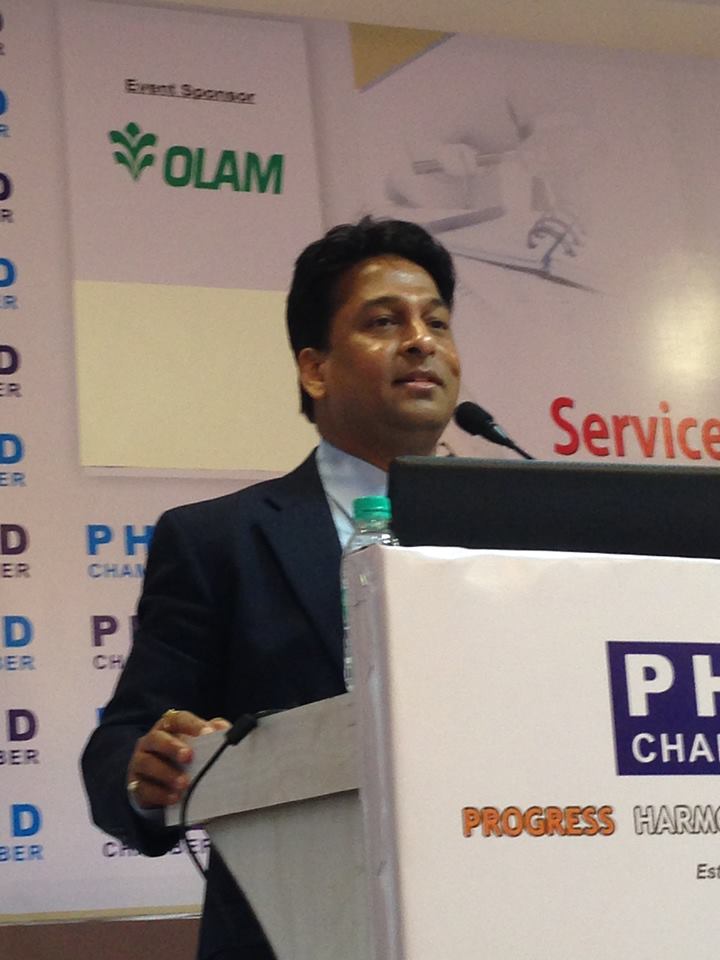| Article Section | |||||||||||
CENVAT credit can be claimed for telecom infrastructure |
|||||||||||
|
|||||||||||
Discuss this article |
|||||||||||
CENVAT credit can be claimed for telecom infrastructure |
|||||||||||
|
|||||||||||
The Hon’ble Supreme Court in the case of M/S BHARTI AIRTEL LTD. VERSUS THE COMMISSIONER OF CENTRAL EXCISE, PUNE - 2024 (11) TMI 1042 - SUPREME COURT upheld the rights of the telecom operators and infrastructure companies to claim CENVAT credit on infrastructure duties and upheld the Hon’ble Delhi High Court decision in the VODAFONE MOBILE SERVICES LIMITED, INDUS TOWERS LIMITED, TOWER VISION INDIA PRIVATE LIMITED, BHARTI INFRATEL LIMITED, VERSUS COMMISSIONER OF SERVICE TAX, DELHI - 2018 (11) TMI 713 - DELHI HIGH COURT and over turned the contrary ruling of Bombay High Court in the case of M/S. BHARTI AIRTEL LTD. (EARLIER KNOWN AS BHARTI TELE-VENTURES LTD.) VERSUS THE COMMISSIONER OF CENTRAL EXCISE - 2014 (9) TMI 38 - BOMBAY HIGH COURT. The Hon’ble Supreme Court resolved the conflicting interpretations regarding the applicability of CENVAT credit for telecom infrastructure, establishing clarity in favour of telecom operators. The Hon’ble Delhi High Court has applied the ‘permanency test’ which was relied on by the Supreme Court’s judgment of COMMISSIONER OF CENTRAL EXCISE, AHMEDABAD VERSUS SOLID & CORRECT ENGINEERING WORKS & ORS. - 2010 (4) TMI 15 - SUPREME COURT. The said test determines whether equipment qualifies as immovable property. Under this principle, machinery permanently fastened or embedded to the earth is deemed immovable property, while equipment fastened merely to ensure “wobble-free operation” does not qualify as immovable. In the case under consideration, telecom towers and shelters were fabricated off-site, supplied in a Completely Knocked Down (“CKD”) form, and fastened to a civil foundation for operational stability. The Delhi High Court held that such fastening, designed solely to prevent wobbling and allow reassembly elsewhere without damage, does not render the equipment immovable property. This interpretation allowed telecom operators to claim CENVAT credit on the duties paid. The Hon’ble Supreme Court in the present case has settled the dispute by approving the Delhi High Court’s view. The Court ruled that towers and PFBs are not permanently fixed to the ground. They are bolted to the foundation temporarily for stability and can be dismantled, relocated, and reassembled. The damage during dismantling mainly affects equipment (like cables or antennas) but not the tower itself. They serve a functional purpose, not a permanent attachment to the land. The Court concluded that telecom towers and shelters as movable property, meeting the definition of "goods" under Section 2(27) of the General Clauses Act, when affixed for operational efficiency without permanent annexation to land. The ruling enables telecom operators to claim CENVAT credit for duties paid on such infrastructure. Our Comments: In this regard, explanation after sec 17 of the CGST Act states that for the purposes of this chapter (i.e. chapter V) and chapter VI, the expression “plant and machinery” means apparatus, equipment, and machinery fixed to earth by foundation or structural support that are used for making outward supply of goods or services or both and includes such foundation and structural supports but excludes— (i) land, building or any other civil structures; (ii) telecommunication towers; and (iii) pipelines laid outside the factory premises Apparently, from the definition of ‘plant and machinery’, telecommunication towers and pipelines laid outside the factory premises has been kept outside i.e. the same cannot be treated as plant and machinery. Therefore, any works contract services used for construction of telecommunication towers, pipeline laid outside the factory, buildings and other civil structures (excluding foundation and structural support) will not be available as ITC. The telecommunication tower, being immovable property, is not eligible for ITC, it will be available in respect of other goods used to provide infrastructure (which are movable) and services used for providing infrastructure. These would cover pre-fabricated shelter made of insulating PUF material made of fibres, Electronic Panel, Base Transceiver Station (BTS) and radio transmission and reception equipment, a diesel generator set, Six poles of 6 to 9 meters length each made of hollow steel galvanized pipes. These are easily removable and hence are ‘goods’ eligible for ITC. Further, Circular No. 219/13/2024-GST dated June 26, 2024 addressed the issue whether the input tax credit on the ducts and manholes used in network of optical fiber cables (OFCs) for providing telecommunication services is barred in terms of clauses (c) and (d) of sub-section (5) of section 17 of the CGST Act, read with Explanation to section 17 of CGST Act ? The Circular clarified that ducts and manholes are basic components for the optical fiber cable (OFC) network used in providing telecommunication services. The OFC network is generally laid with the use of PVC ducts/sheaths in which OFCs are housed and service/connectivity manholes, which serve as nodes of the network, and are necessary for not only laying of optical fiber cable but also their upkeep and maintenance. In view of the Explanation in section 17 of the CGST Act, it appears that ducts and manholes are covered under the definition of “plant and machinery” as they are used as part of the OFC network for making outward supply of transmission of telecommunication signals from one point to another. Moreover, ducts and manholes used in network of optical fiber cables (OFCs) have not been specifically excluded from the definition of “plant and machinery” in the Explanation to section 17 of CGST Act, as they are neither in nature of land, building or civil structures nor are in nature of telecommunication towers or pipelines laid outside the factory premises. Accordingly, it is clarified that availment of input tax credit is not restricted in respect of such ducts and manhole used in network of Optical Fiber Cables (OFCs), either under clause (c) or under clause (d) of sub-section (5) of section 17 of CGST Act. (Author can be reached at [email protected])
By: Bimal jain - November 25, 2024
|
|||||||||||
Discuss this article |
|||||||||||
 9911796707
9911796707

